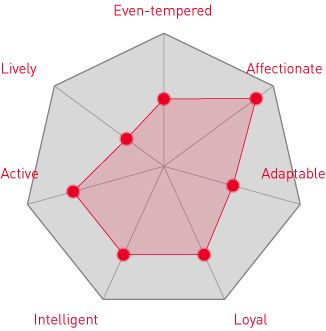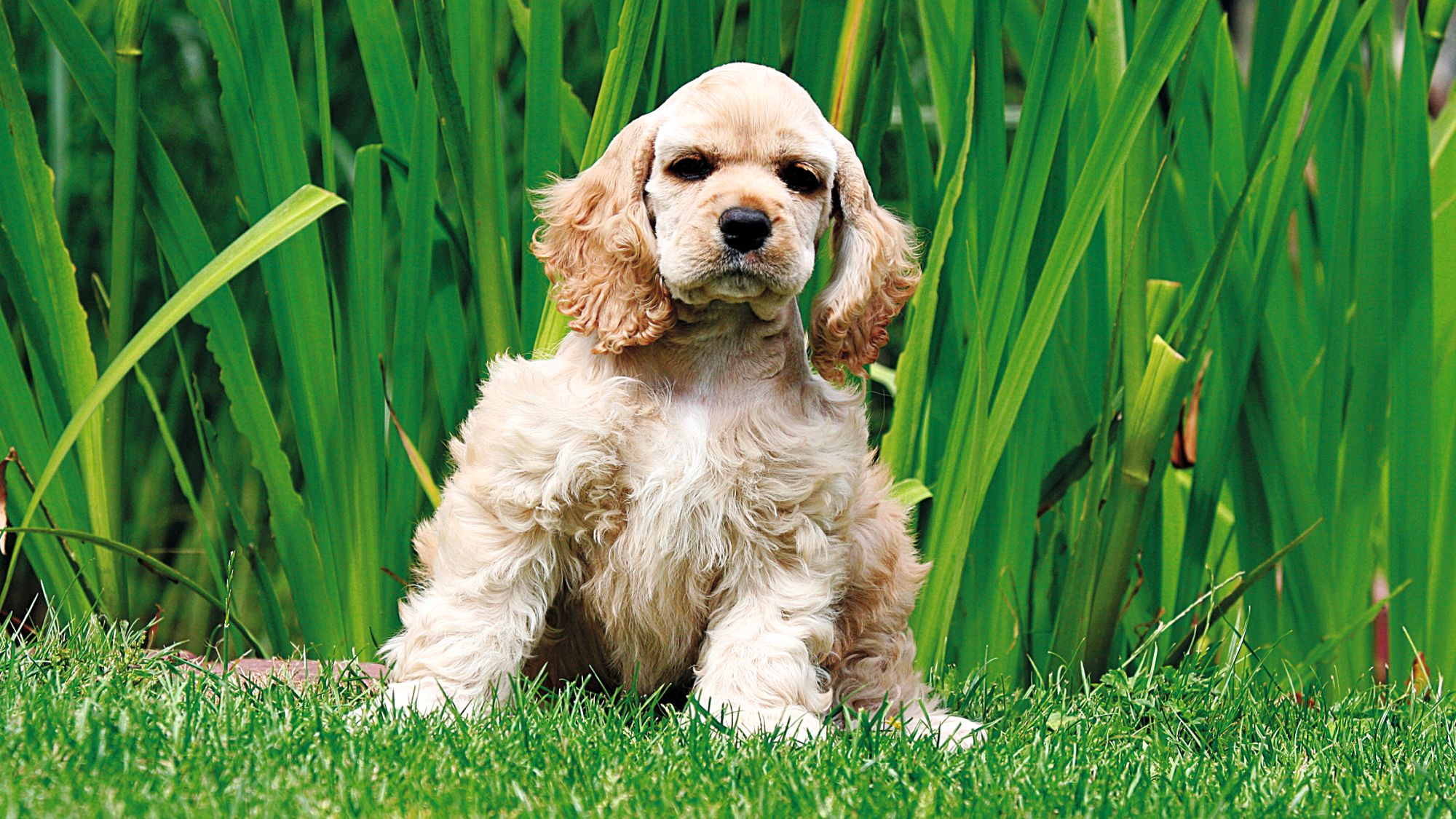
Let's talk American Cocker Spaniels
The American Cocker Spaniel, aka the Cocker Spaniel, continues to be one of the world’s most highly sought-after breeds. Established as a hunting dog, the breed has now become well-known on the homefront for their silky coat and affable nature. The American differs from their sister breed, the English Cocker Spaniel, with a smaller head and body and shorter snout, the two breeds developing differently on both sides of the pond in the early 20th century. Cocker Spaniels are good family dogs, a trusted companion always up for play, a walk, or just a round of couch time.
Official name: American Cocker Spaniel
Other names: Cocker Spaniel, Merry Cocker
Origins: Spain

| Drooling tendencies |
|
Warm weather? |  |
| Grooming needs |  |
Cold weather? |  |
| Shedding level |  |
Suited to apartment living? |  |
| Barking tendencies |  |
Can stay alone?* |  |
| Energy level (low, medium, high) *: | Low | Family pet? * |
 |
| Compatibility with other pets | |
* We advise against leaving pets alone for long stretches. Companionship can prevent emotional distress and destructive behaviour. Speak to your veterinarian for recommendations.
Every pet is different, even within a breed; this snapshot of this breed’s specifics should be taken as an indication.
For a happy, healthy and well-behaved pet, we recommend educating and socialising your pet as well as covering their basic welfare, social and behavioural needs.
Pets should never be left unsupervised with a child.
All domestic pets are sociable and prefer company. However, they can be taught to cope with solitude from an early age. Seek the advice of your veterinarian or trainer to help you do this.


| Baby age: | Birth to 2 months |
| Puppy age: | 2 to 12 months |
| Adult age: | 1 to 7 years |
| Mature age: | 7 to 10 years |
| Senior age: | From 10 years |
1/7
Get to know the American Cocker Spaniel
All you need to know about the breed
The graceful and very affectionate Cocker Spaniel is a breed for the ages, bore out by its huge popularity: From the late 1930s to the late 1950s, the Cocker Spaniel was the most popular breed year after year in the American Kennel Club’s rankings. The hit Disney movie Lady and the Tramp, which featured Lady as a Cocker, only added to their appeal.
The breed has also made a consistent appearance on the dog show circuit, their glossy coats soaring through the arena to the pleasure of the crowd. Cocker Spaniels are easy to train, with obedience and agility competitions another plus for the breed, as is their use as a therapy dog.
Cocker Spaniels are included in the American Kennel Club’s Sporting Group. Ever wondered about the origin of the Cocker Spaniel name? It stems from their breeding to hunt the woodcock bird. The friendly Cocker Spaniel has now become well-known on the homefront for its affable nature and ability to settle in with the family.
For the full enjoyment of the Cocker Spaniel, training should happen early and be carried out in a gentle manner. The breed is known to want to please but harsh words do not a contented dog make.
Their silky coat is a huge selling point for the breed but it’s also complex. You will need to brush your Cocker Spaniel consistently. This proud dog will shine best when its locks are lush.

2/7
2 facts about American Cocker Spaniels
1. Those long beautiful ears are more than an attractive attribute
One of the most recognisable parts of the Cocker Spaniel is their long silky ears. Clean them regularly to detect any sign of inflammation (foreign body, mites, allergies) and to keep your dog comfortable.
2. Cocker Spaniels have been known to snap
The Cocker Spaniel dog can nip or bite out of the blue, something called “Cocker rage.” The dog appears disoriented afterward and unaware of their actions. England’s celebrated Cocker Spaniel Club deems the behaviour very out of character and attributed to possible bad breeding, a rarity, rather than temperament issues.
History of the breed
One of America’s favorite breeds is thought to have their origins in Spain, the word “spaniel” stemming from their homeland. The history of the Cocker Spaniel is easy to track, since the breed gained tremendous popularity throughout Europe over the ages for their acumen as sporting dogs. They were used primarily for birding with nets, archery, and falcons even before the invention of the rifle. All spaniels grew to be classified as either water spaniels or land spaniels, the Cocker being a land spaniel. The evolution of the Cocker Spaniel really took hold in England in the 19th century when showing and breed standards were in full swing. The breed soon stood out from the pack of other spaniel breeds.
The American Cocker Spaniel further diverged on the breeding track as the dog gained much favour Stateside and was established as an official breed by the American Kennel Club in 1946, topping the club’s breed rankings 18 years in a row during that time. The American distinguishes themselves from their English cousin with a shorter head and nose and bounteous coat. They are now the smallest of the American Kennel Club’s Sporting Group, renowned for their birding ability.
The breed also gained tremendous popularity in the mid-20th century with the release of the 1955 Disney movie Lady and the Tramp, with Lady portrayed as a Cocker Spaniel dog. Entering the White House propelled the breed to further stardom with President Nixon taking a Cocker Spaniel as a pet. Checkers, however, who served alongside Nixon from 1969 to 1974, kept his politics to himself.

4/7
From head to tail
Physical characteristics of American Cocker Spaniels
1. Ears
Long silky ears, well-feathered fur.
2. Head
Strong yet soft and rounded head, distinctive very alert expression.
3. Body
Body is strong and compact without appearing stout, back is sloping and strong.
4. Tail
Tail extends slightly lower than back yet level, can at times be docked.
5. Coat
Coat can be flat or slightly wavy, short and fine on head, medium-length on body, feathered on ears, chest, abdomen, and legs.
5/7
Things to look out for
From specific breed traits to a general health overview, here are some interesting facts about your American Cocker Spaniel
6/7
Caring for your American Cocker Spaniel
Grooming, training and exercise tips
Cocker Spaniels enjoy runs and long walks and should engage in them every day. Their posh appearance has many owners forgetting that this is a sporting spaniel—the smallest of the group but nonetheless, an active dog. As a field sport breed, they are used to being outdoors for long periods and need to be so, even if it is for a twice-daily walk or light jog. Cocker Spaniel exercise can include lots of activities, like fetching a favored ball or a romp in the yard with the family since the breed enjoys playtime tremendously. Keeping a Cocker Spaniel occupied is easy where people – and fun – are involved.
The glossy coat of the Cocker Spaniel is one of their main attractions. Sleek and fine, it has made them the highlight of dog shows for decades, garnering the top prize many times over. Their hair remains short on most of their body but is longer around the ears, tail, paws, chest, back of the arms and legs and certain parts of the face. Brush your Cocker Spaniel daily to keep their coat looking spiffy. Don’t hesitate to go to a professional groomer to really turn your Cocker Spaniel out in their full regalia. A pro will know how to handle those hard-to-reach areas where hair can become matted or unruly. Your blue ribbons may just await ...
As with many purebred dogs whose traits are intact, training should come early for maximum impact. Cocker Spaniels are very responsive dogs, and very much aim to please their owners, but have a soft side. Training them with a patient, gentle hand will bring about the most harmonious results. Even using a calm tone of voice will be met with a better response than using a robust one when laying down commands. Consistency is key in disciplining your Cocker Spaniel; harshness is not. Their softness extends to the inside as well as the outside. Cocker Spaniel puppies will thrive in puppy training courses where all fun all the time is really rule time, too. As with many breeds, food is a huge motivator for the Cocker Spaniel when it comes to rewards for good behaviour.
A first-rate family pet, the Cocker Spaniel does not do well without his human pack, so it isn’t a good idea to leave them alone in the house for too long. They are delicate in temperament and the Cocker Spaniel can give way to real concern, even panic, if left by themselves for extended periods.
Adorable as they are, the Cocker Spaniel does bark to a good degree but it’s their natural response to stimuli on the homefront. Loneliness, boredom, or separation anxiety are all reasons for excessive barking. Socialising them early with dogs, humans, and the goings-on of the house will help reign in the noise.
Read More about Breeds


Let’s talk about dog skin allergies

Is my dog overweight?
Sources
1 - Veterinary Centers of America https://vcahospitals.com/
2 - Royal Canin Dog Encyclopaedia. Ed 2010 and 2020
3 - Banfield Pet Hospital https://www.banfield.com/
4 - Royal Canin BHN Product Book
5 - American Kennel Club https://www.akc.org/
